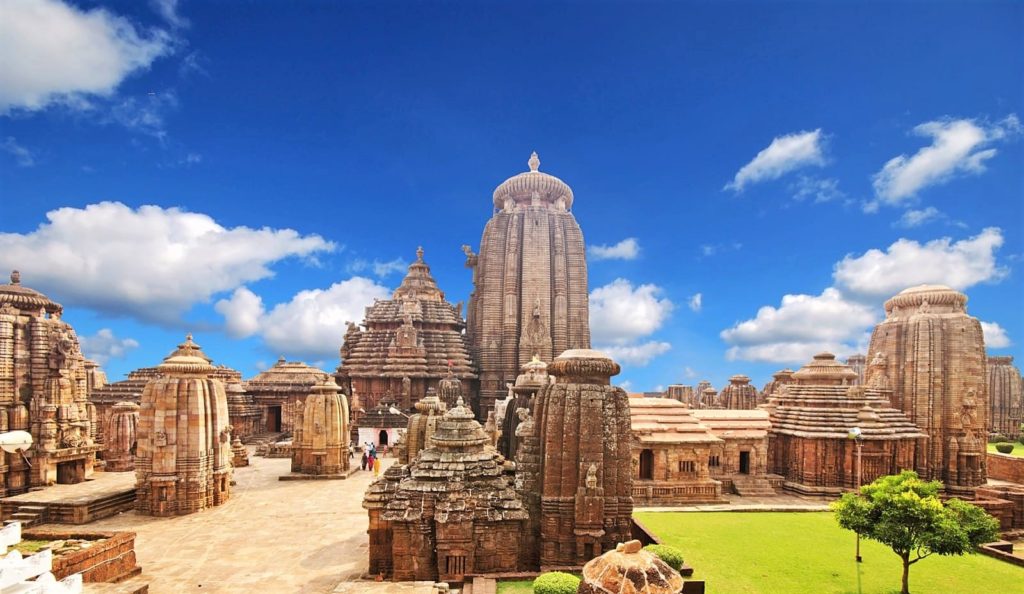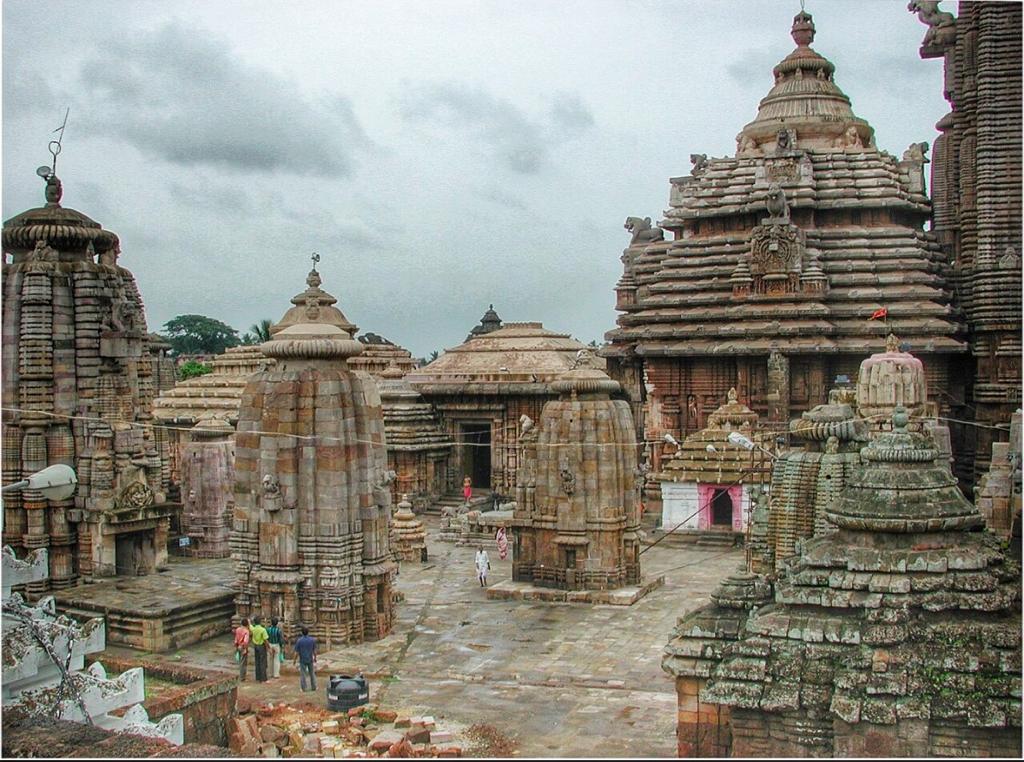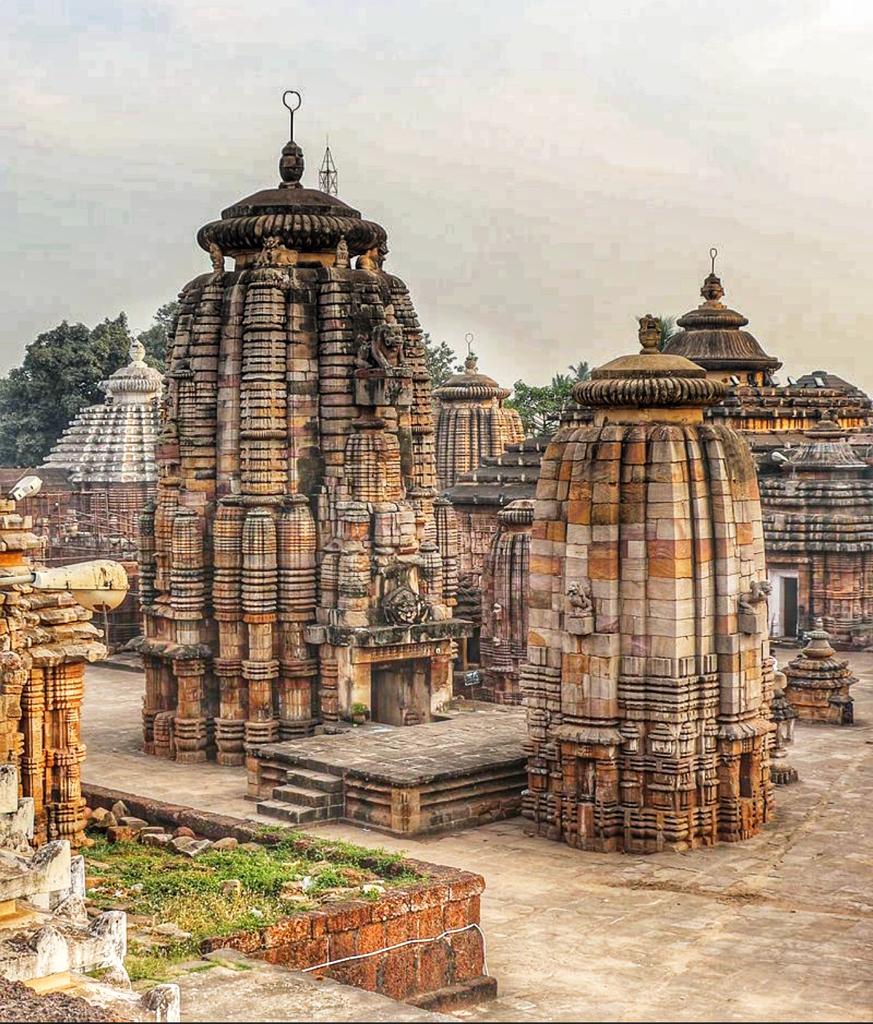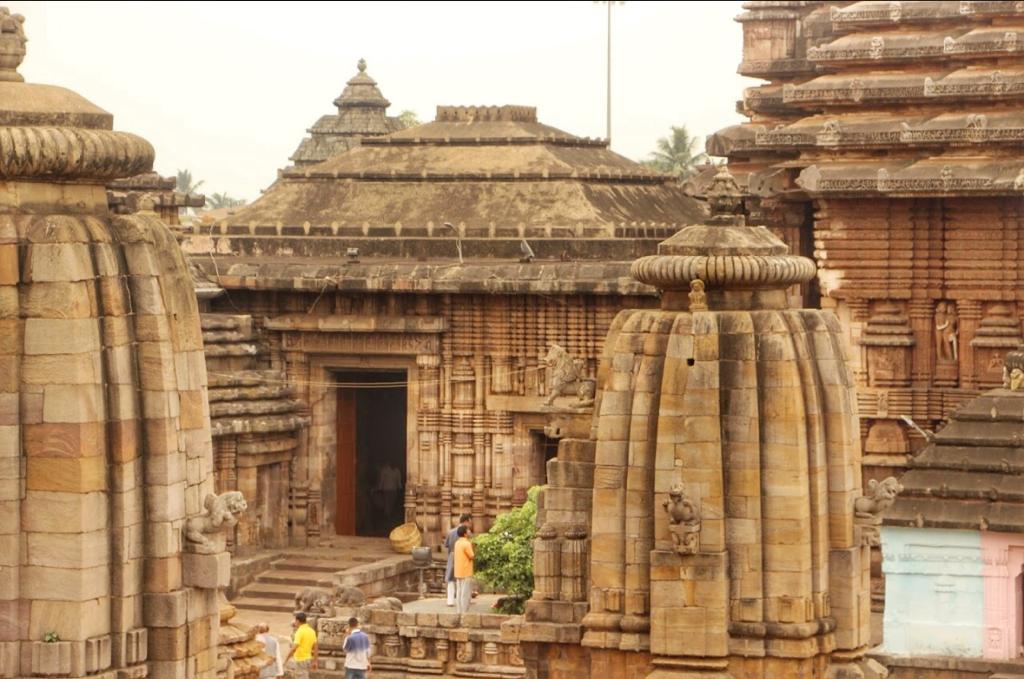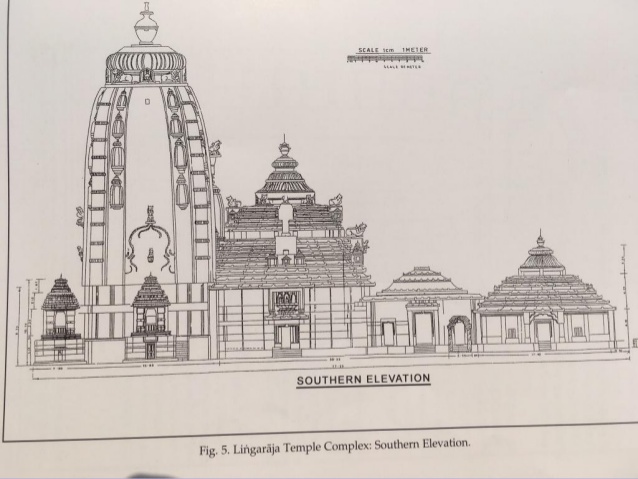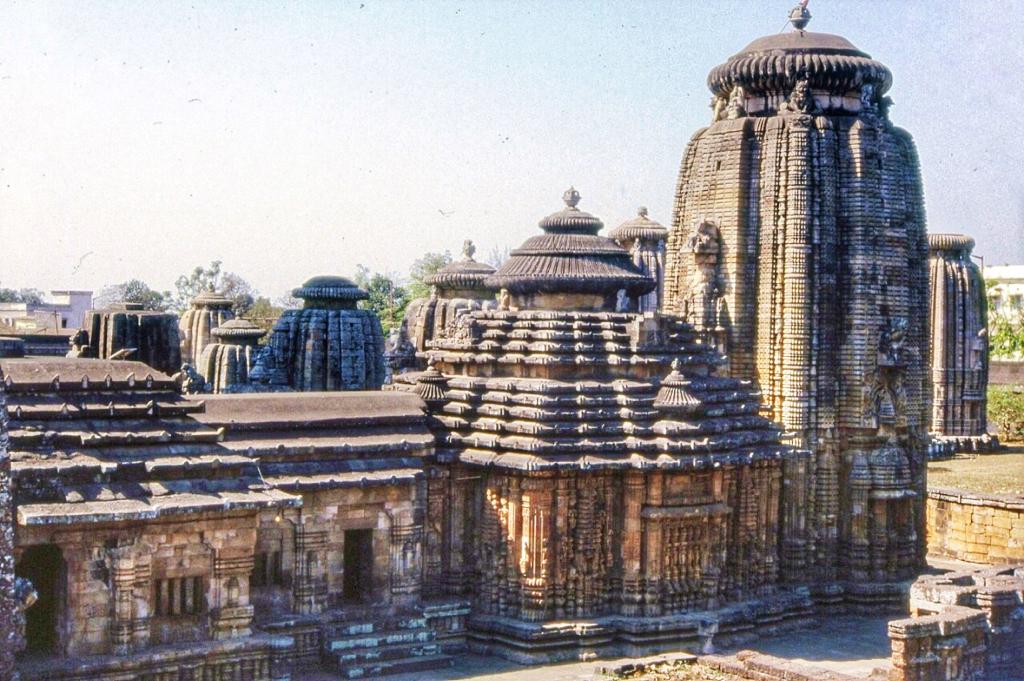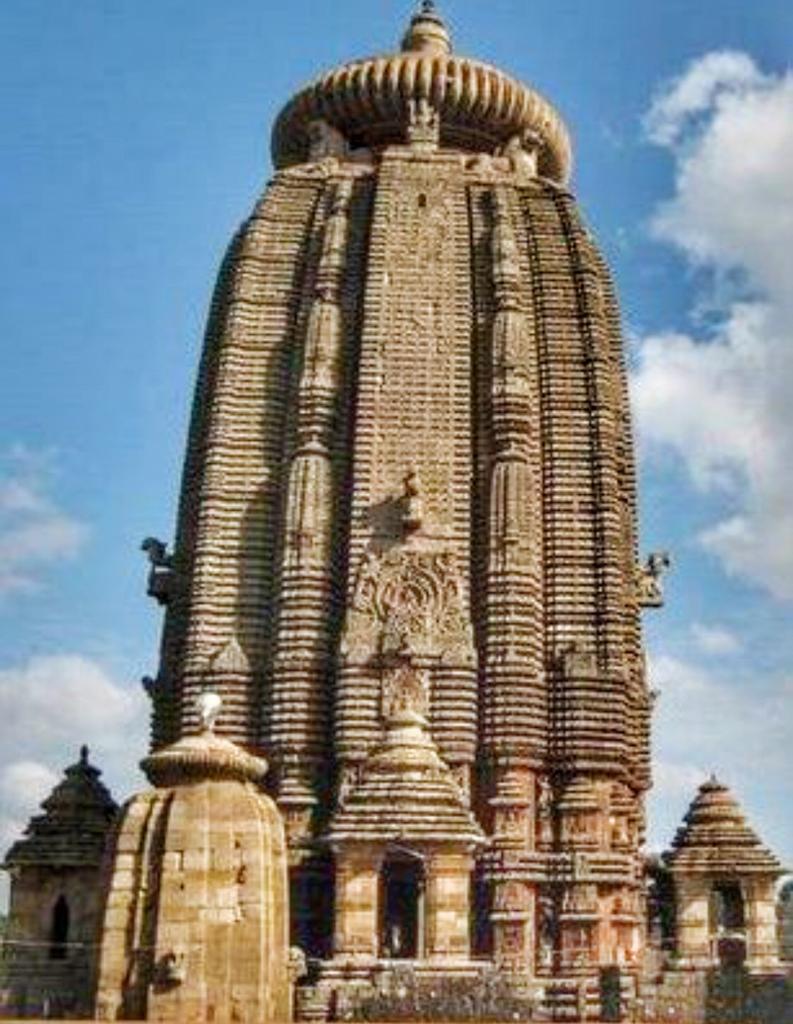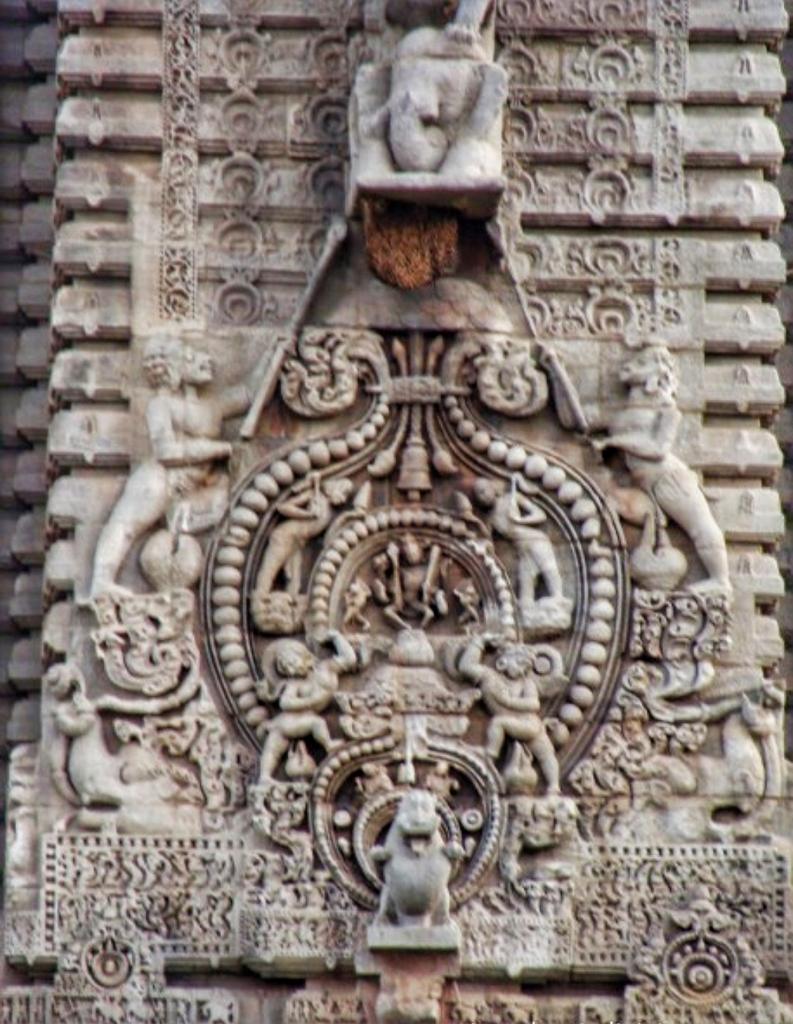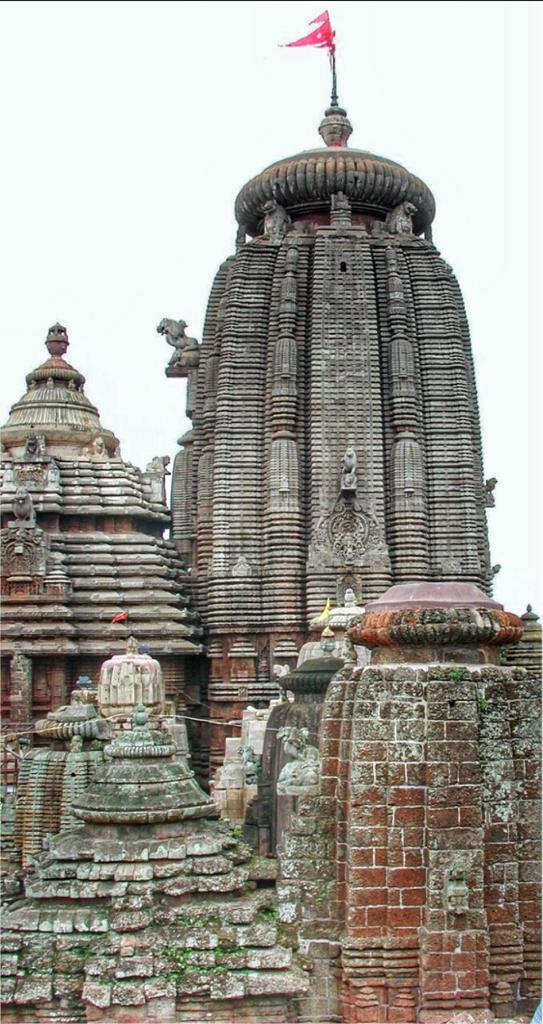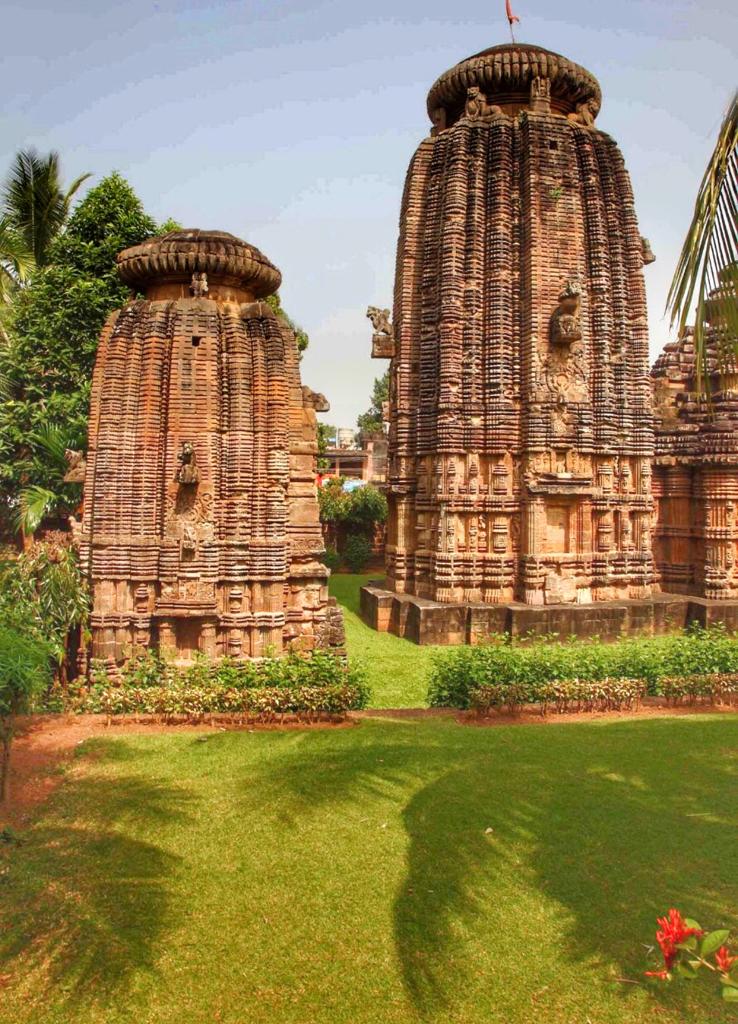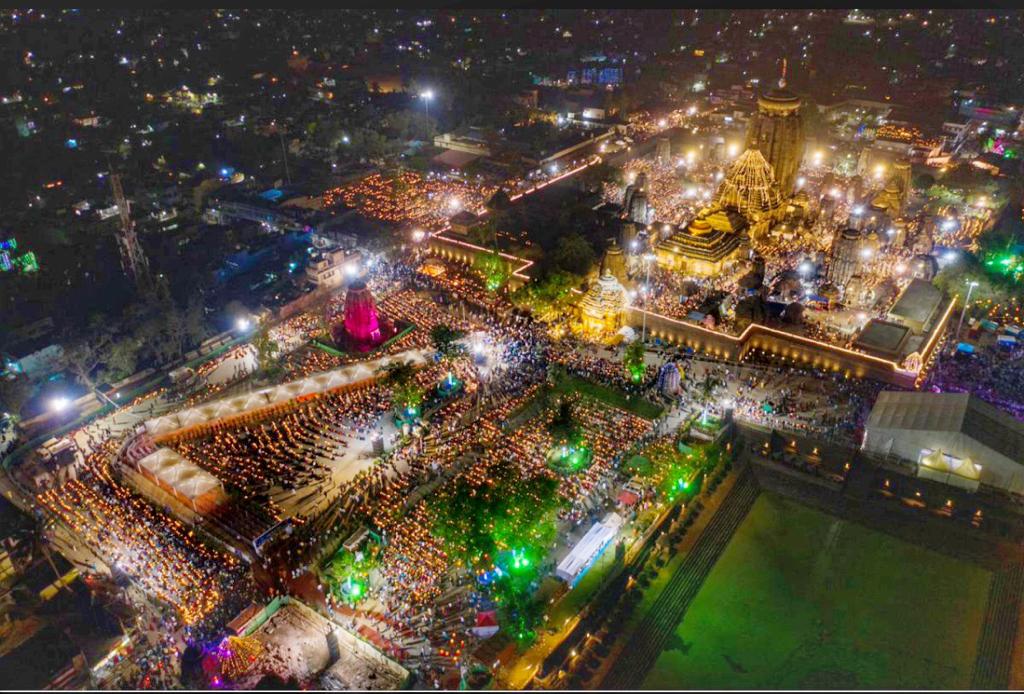Lingaraja Temple, Bhubaneswar

Posted by Anamika Bose Roy
Edited by Shivam Singh
19th July, 2020
Built in 11th century by King Jajati Keshari of Somavamsi dynasty, Lingaraja temple is situated in Bhubaneswar, the capital of Indian state Odisha.
This temple is dedicated to Lord Shiva (who is also known as Lingraja) and is one of the oldest temples in Bhubaneswar. It is the most prominent landmark of the city and one of the major tourist attractions of the state. It is built of red stone and represents an example of Kalinga style of architecture.
The central tower of the temple is 180 ft (55 m) tall. The temple is built in the Deula style that has four components namely, vimana (structure containing the sanctum), jagamohana (assembly hall), nata-mandira (festival hall) and bhoga-mandapa (hall of offerings), each increasing in the height to its predecessor.
Unlike the temples of Khajuraho, which were completely deserted after the fall of the Chandelas the temples of Odisha, particularly the larger ones like Lingaraja developed into important centers of Hindu pilgrimage and the elaborate ritual of Hindu worship is carried out in them till date.
Temple is maintained by the Temple Trust Board and the Archaeological Survey of India (ASI). The temple has an average of 6,000 visitors per day and receives lakhs of visitors during festivals. Shivaratri festival is the major festival celebrated in the temple
The temple is out of bounds for non-Hindus. However, one can get a view of the entire temple complex and take photographs from a raised platform erected specially for the tourists just outside the temple complex.
The other attraction of the temple is the Bindusagar Lake, located in the north side of the temple. The 1300 ft long and 700 ft wide lake is the center of activities for the people of Old Town and is the hub of temple festivities.
Temple Architecture
The Lingaraja temple is the largest temple in Bhubaneswar and has 150 small shrines inside its huge courtyard.
James Fergusson, a noted critic and historian of 18th century rated the temple as “one of the finest examples of purely Hindu temple in India”.
The temple is divided into four sections―Garbh Griha (sanctum sanctorum), Yajna Shala (the hall of yajnas), Natya Shala (hall of dance) and the Bhoga Mandap (the hall of offering).
Its main entry gate is called as the ‘Simhadwara’ or the ‘Lions’ Gate’, situated on the eastern side of the temple. The main entrance is located in the east, while there are small entrances in the north and south. The outer walls of the temple are decorated with beautiful sculptures of beasts, birds, creepers, flowers, Gods and Goddesses.
The door in the gate of the entrance porch is made of sandalwood. Each inch of the 55 m (180 ft) tall vimana tower is sculpted.
The bhogamandapa (Hall of offering) has four doors in each of the sides. The natamandira (festival hall) has one main entrance and two side entrances. The side walls of the hall has decorative sculptures displaying women and couples. It has a flat roof sloping in stages.
The jagamohana (assembly hall) entrances from south and north and has a 30 metres (98 ft) tall roof. The hall has a pyramidal roof made of up several horizontal layers as in the hall of offerings. The sanctum is square in shape from the inside. The tower walls are sculpted with female figures in different poses.
In the sanctum sanctorum, the linga of Lord Shiva is regarded as ‘Swayambhu’ (self-originated) and worshipped as both Lord Shiva and Lord Vishnu. It is said that when construction of Lingaraj Temple was about to be completed, Jagannath culture started growing in Odisha. Hence, the presiding deity here is known as Hari-Hara; Hari denotes Lord Vishnu and Hara meaning Lord Shiva. The Shivalinga in the sanctum of the temple rises to a height of 8 inches above the floor level, and is 8 feet in diameter.
The lingaraja originally consisted only a Cella (Garbh Griha) and a Mandapa, of truly gigantic proportions. The Cella alone is 55 metres into the sky. The Mandapa is rectangular in desing, large enough to require additional support in the form of four massive central columns and its pyramidal roof reaches a height of almost a 100 feet.
Later the Brahman system of worshiping became increasingly complex. It was no longer sufficient, only to obtain darshan and or worship the god by singing hymns in his praise. The concept of the temple as the “house of God” was carried to extreme, several new rituals were practiced like like feed, clothe, bath and entertain the sculpture image of the deity as if God was himself installed in the sanctum. In order that the new rituals could be carried out with due pomp and glory, two more halls- Nata Mandir and Bhog Mandir had to be added to the existing mandapa or “Jagmohan” of the Lingaraja.
Somavamshi Dynasty
The Somavamshi or Keshari dynasty ruled parts of present-day Odisha in eastern India between the 9th and the 12th centuries. Their capitals included Yayatinagara (modern Binka) and Abhinava-Yayatinagara (modern Jajpur).
The Somavamshis may have been related to the Panduvamshis, who ruled the Dakshina Kosala region in central India. They were probably driven out from this region by the Kalachuris, following which they conquered the Kalinga and the Utkala regions in present-day Odisha, supplanting the Bhauma-Karas.
The Somavamshis introduced a new style of art and architecture in Odisha, and their rule saw a remarkable shift from Buddhism to Brahmanism in the region. The Somavamshi rule ended in the early 12th century, when the Eastern Ganga ruler Anantavarman Chodaganga captured their territories.
Festival at Temple
Shivaratri is the main festival celebrated annually in Phalgun month when thousands of devotees visit the temple.
Apart from a full day of fasting, bel leaves are offered to Lingaraja on this auspicious day. The main celebrations take place at night when devotees pray all night long. The devout usually break their fast after the Mahadipa (a huge lamp) is lit on the spire of the temple. This festival commemorates Lingaraja having slain a demon.
Thousands of bol-bam pilgrims carry water from river Mahanadi and walk all the way to the temple during the month of Shravana every year.
Every year the chariot festival (Ratha-Yatra) of Lingaraja is celebrated on Ashokashtami. The deity is taken in a chariot to Rameshwar Deula temple. Thousands of devotees follow and pull brightly decorated chariots containing the idols of Lingaraja and his sister Rukmani.
Timing of Temple: 6 AM – 9 PM
References
Wikipedia – The Free Encyclopedia
Odisha Tourism Website
Indian Art by Satish Grover (book)
Google Images
Text is available under the license: Creative Commons Attribution-NonCommercial-ShareAlike; additional terms may apply. This license lets others remix, tweak, and build upon this content non-commercially, as long as they credit the author and license their new creations under the identical terms.
If you think any of the content here is not as per the copyright laws, please let us know via email or contact form on home page, content will be removed from page.
